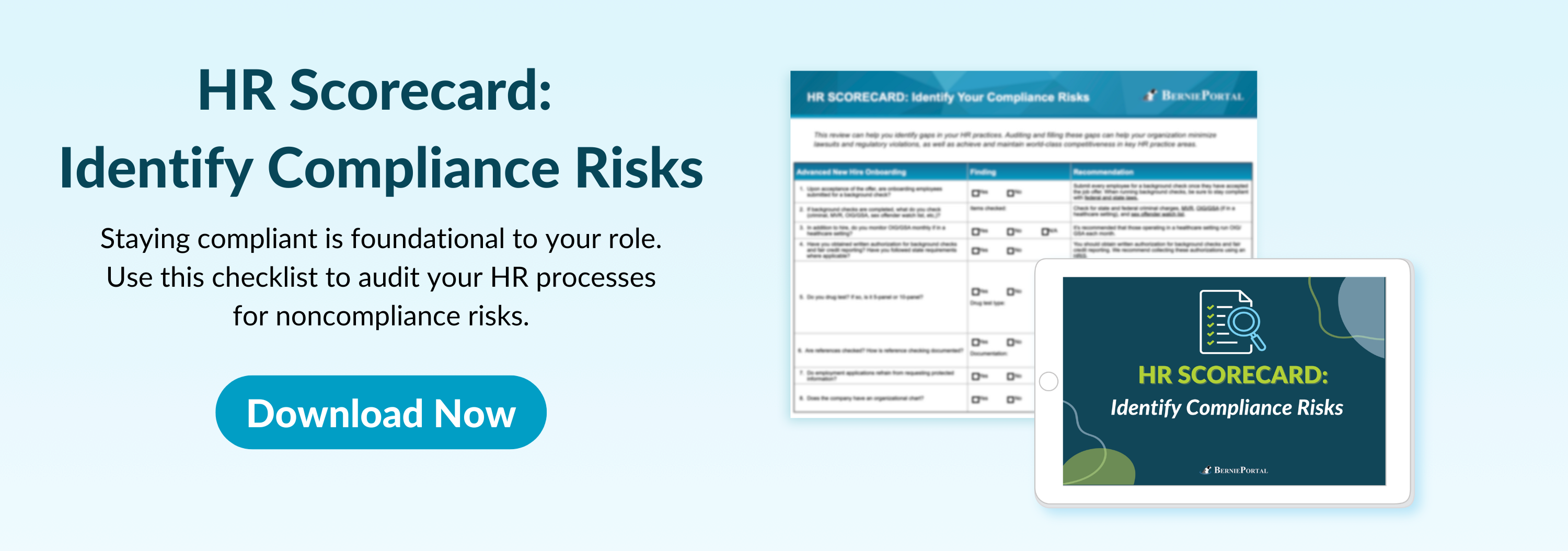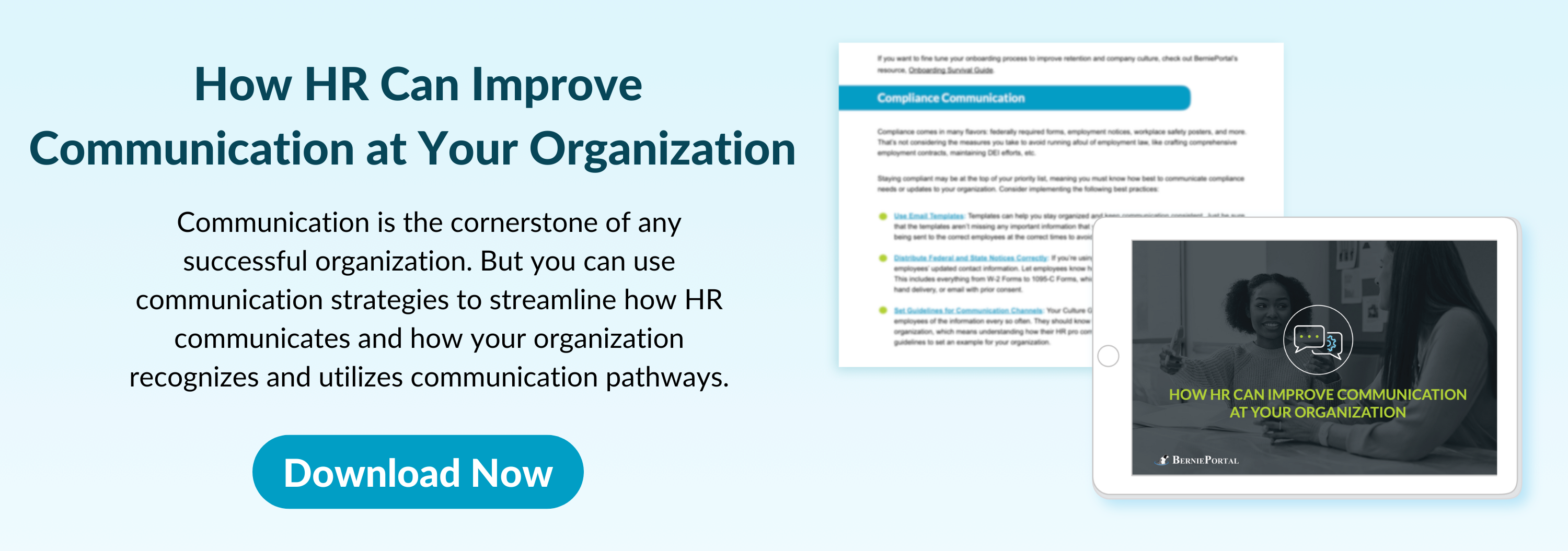Written by
Will Miranne
Will is an aPHR-certified writer on the marketing team at BerniePortal. He writes about healthcare, human resources, and benefits.
Are Organizations Required To Announce Layoffs?

Layoffs can be tricky, but are organizations required to inform their employees before conducting them? This answer is reflected in the WARN Act. A recent example of this can be seen in the Twitter lawsuit, which alleges that Twitter did not follow the requirements of the act amidst a recent round of layoffs.
Read on to learn more about the WARN Act and what it means for employers conducting layoffs.
What Constitutes A Layoff?
A layoff is when an employer either temporarily or permanently dismisses an employee and is usually a result of an organizational restructuring, downsizing (reduction in force), or economic pressures that impact the industry.
Compliance can even further complicate layoffs. In particular, employers who fall under the umbrella of the WARN Act must navigate its provisions correctly.
Dealing with layoffs involving remote employees can cause similar compliance concerns. Most often, employees will be subject to the laws of the location where they physically work. If you are a company based out of California and a remote employee works in Nevada, then that employee will likely be subject to Nevada's wage and hour laws.
Does the WARN Act Require Companies to Announce Layoffs??
The Worker Adjustment and Retraining Notification Act of 1988 (WARN Act) is a U.S. labor law that requires employers to give workers 60 days’ written notice before a covered entity closes or conducts mass layoffs.
“...a reduction in force that is not the result of a plant closing, and that results in an employment loss at a “single site of employment” during any 30-day period for (1) at least 33% of the employees (excluding part-time employees), and (2) 50 or more workers (excluding part-time employees). If 500 or more employees (excluding part-time employees) are affected, the 33% requirement does not apply.”
This means that mass layoffs require affected employers to communicate the plan for layoffs to the staff ahead of time.
Many states also have mini WARN acts, such as the Tennessee Plant Closing and Reduction in Operations Act, which applies to employers with 50-99 employees. This act applies to hourly employees, salaried employees, and managerial positions.
The Department of Labor has published an exhaustive Employer’s Guide to Advance Notice of Closings and Layoffs, but making sense of such a complex document can be difficult. Because this is a legal issue, definitions are vital.
Here are the key terms that can help you understand when the WARN Act provisions are triggered:
-
A plant closing occurs when an employment site (or one or more units within it) shuts down either temporarily or permanently. The site doesn’t have to be a “plant” in the traditional sense: any single site of employment—or one or more units within one—counts as a plant as long as the closing leads 50 or more employees to face employment loss within a 30-day period, even if they’re not all in the unit that shut down.
-
A mass layoff is a workforce reduction that does not result from a plant closing but meets certain parameters. Either:
-
500 or more employees at a single site of employment lose work, or,
-
50 or more employees lose work, and that number represents at least one-third of the active workforce at the site.
-
In either case, employment loss means any one of these three scenarios:
-
An employee is terminated for any reason besides due cause, resignation, or retirement.
-
An employee is laid off for more than six months.
-
An employee’s hours are reduced by more than 50% for every month in a six-month period.
If any of these conditions are met, that employee has experienced employment loss.
If an employer fails to satisfy the requirements of the WARN Act, they are subject to a penalty. According to the IRS, the penalty is:
“…an amount equal to back pay and benefits for the period of violation up to 60 days.”
“An employer that fails to provide notice as required to a unit of local government is subject to a civil penalty not to exceed $500 for each day of violation. This penalty may be avoided if the employer satisfies the liability to each affected employee within three weeks after the closing.”
→ Stay prepared for HR challenges this year. Download Now: State of HR 2023 [Free Survey Report]
What Are Layoff Best Practices?
-
Exhaust All Options:
Before you commit to layoffs, be sure there are no other alternatives that can be considered. Communicate to your team that you are working on cutting costs in certain areas. While these reductions may affect the work environment, employees will likely be thankful that you are working to maintain all staff in times of crisis.
-
Plan Accordingly:
If layoffs are determined to be the only viable option, then it is time to forge a working plan. Consider all of the challenges the layoffs spurred, and determine your most significant concerns. Planning and preparing are the most important steps for an effective layoff strategy.
-
Manage all compliance requirements:
You must be sure your reduction in staff is not heavily leaning toward any of the protected classes, such as older employees, individuals with disabilities, and minority staff members. If these numbers insinuate that the employees in one of these groups make up an amount that is not representative of the number of employees at the company, then you may be at risk of receiving a lawsuit based on discriminatory firing practices. The WARN Act must be followed as well.
-
Communicate with the remaining staff:
Set aside time to meet with employees who are being laid off. Managers should care enough about their employees to meet with them, seek their feedback, and hear their questions. Employees all have their own lives, and many have families that rely on them. Show respect for their situation.
-
Consider severance options and benefits:
Consider providing laid-off employees with a separation package. Redeployment can be another option. This refers to moving employees into a new role that may pay less or cover different aspects of the organization. Some organizations may also wish to provide employees access to a placement firm to assist them in their search for new employment.
-
Conduct layoffs with dignity:
While the situation is unfortunate and heartbreaking, employees are more likely to respect the difficult decision and leave gracefully if you respectfully handle layoffs. This can improve your chances of maintaining low turnover rates among those who remain. Ensure that the process is sincere and respectful to support a lasting organization.
-
Reestablish rapport with employees:
It is important that employers work with employees following layoffs to ensure they are on board with the organization's future. Talk to employees and find out firsthand what they are looking for long-term. If you can establish trust and mutual understanding as the foundation of your relationship with your employees, you significantly increase your chances of corporate success post layoffs.
Remember that layoffs are unfortunate and often inevitable aspects of business. While you want them to run smoothly. There is no avoiding the negatives they prompt, but focusing on positivity wherever possible can help you to achieve a more successful transition once the layoffs are complete.
Additional Resources
You can also stay informed, educated, and up-to-date with HR compliance and other important topics by using BerniePortal’s comprehensive resources:
-
BernieU—free online HR courses, approved for SHRM and HRCI recertification credit
-
BerniePortal Blog—a one-stop-shop for HR industry news
-
HR Glossary—featuring the most common HR terms, acronyms, and compliance
-
HR Guides—essential pillars covering an extensive list of comprehensive HR topics
Written by
Will Miranne
Will is an aPHR-certified writer on the marketing team at BerniePortal. He writes about healthcare, human resources, and benefits.
Related Posts
Each year, new state and local regulations take effect, and with a new administration...
As we approach 2025, it's essential for HR professionals to plan for the upcoming year's...
From major holidays to key compliance and ACA deadlines, here’s everything you need to...








Submit a Comment